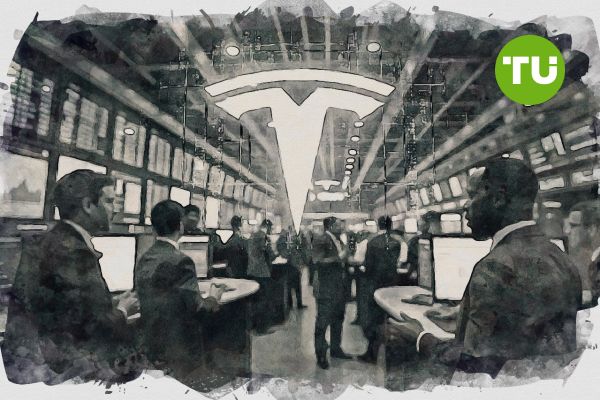Tesla stock drops 2.7% after Musk denies demand fears
 Chinese and European automakers continue to capture EV market share with new offerings
Chinese and European automakers continue to capture EV market share with new offerings
As of May 22, Tesla stock is trading at $334.62, down 2.7% over the past 24 hours. This decline comes after a strong four-week rally in which the stock gained over 45%.
Highlights
• Tesla stock declined to $334.62, breaking its four-week rally as momentum slowed near key resistance at $430.
• Elon Musk’s political involvement and backlash from global boycotts are raising concerns about brand damage and demand.
• Rising EV competition and technical indicators suggest short-term volatility with potential support at $289 and $271.
From a charting perspective, Tesla recently broke above a key neckline around $289, completing a triple bottom pattern that had formed since March. This breakout was a bullish signal, pushing the stock quickly toward the $350 region. However, the current pullback is bringing the price closer to this neckline support level, which now serves as the first major floor. Below that, $271—the 50-day moving average—offers another layer of support and has historically acted as a pivot area in previous retracements.
On the upside, resistance is expected around $430, which was the high reached in January. This level also coincides with prior consolidation zones and Fibonacci extensions from the $289 breakout. A clean break above $430 would shift momentum decisively back to the bulls, potentially targeting $489—just below the all-time high.
TSLA stock price dynamics (March 2025 - May 2025). Source: TradingView.
Momentum indicators offer a mixed outlook. The Relative Strength Index (RSI) is currently hovering just under 70, near overbought territory, suggesting a short-term pause or pullback is likely. Meanwhile, the Moving Average Convergence Divergence (MACD) shows signs of flattening, hinting that bullish momentum may be fading temporarily.
Political controversies and competitive pressures
Beyond technicals, Tesla’s near-term prospects are being shaped by broader market dynamics and CEO Elon Musk’s growing political entanglements. Musk’s recent comments aimed at downplaying fears of declining demand, amid widespread criticism tied to his role in the Trump administration’s Department of Government Efficiency (DOGE). This political affiliation has sparked global boycotts under the “Tesla Takedown” campaign, particularly in key markets like Europe and China.
Brand damage resulting from these controversies is already being felt. Sales data from the European Union suggest that Tesla registrations dropped notably in Q2 compared to the previous year. This decline is particularly damaging given Tesla’s high reliance on international markets for growth and the ongoing price wars in the electric vehicle (EV) space.
In addition to reputational challenges, Tesla faces intensifying competition. Chinese and European automakers continue to capture EV market share with new offerings, while tech-driven entrants like Xiaomi are stepping up. Xiaomi’s recent unveiling of the YU7 SUV, with pricing and specs targeting Tesla’s Model Y segment, has raised eyebrows among analysts, some of whom believe Tesla may need to further cut prices or boost incentives to stay competitive.
Short-term consolidation with potential for breakout
Given the technical setup and external pressures, Tesla stock is expected to remain volatile in the near term. The $289 support level will be critical in determining whether the recent uptrend holds. A successful retest and bounce could set the stage for another run toward $430. A move above that would confirm a bullish continuation pattern, possibly extending the rally to $489.
On the other hand, failure to hold $289 would likely invite additional selling, with the 50-day average at $271 serving as a key battleground. Breaching that level would open the door to a deeper retracement, possibly to $250.
Tesla’s Q2 deliveries in China fell 24% year-over-year, highlighting demand challenges and intensifying competition in the key EV market. Despite this, analysts like Morgan Stanley’s Adam Jonas remain bullish, citing the long-term potential of Tesla’s AI and robotics units, valued at up to $1.4 trillion.













































































































































